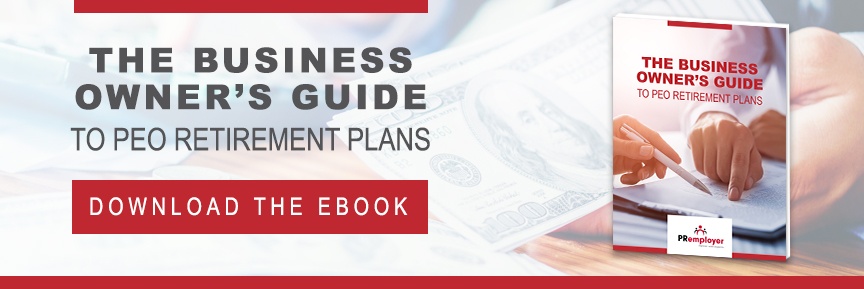
Regardless of age, your employees are likely thinking about retirement. Providing a quality 401(k) helps your employees feel appreciated and cared for – and encourages them to stick around to build money in the account.
However, not all plans are equal, and a bad 401(k) can backfire, making employees feel misled and undervalued – even when offered with the best intentions. Offering good retirement offerings can be a challenge for small companies to afford. However, business owners have options to provide excellent retirement care to their staff, no matter the company size.
In this post, we'll go over the crucial facets of 401(k)s to help your company find the best plan to help your staff with their retirement planning.

Know the Type of Plan You Want
Saying, "I want to set up a 401(k)," is not specific enough since there are four different types of 401(k), each with their advantages and disadvantages. Knowing the different types of plans helps you figure out what works best for your company and your staff.
It's also important to consider other options, like whether you can match contributions when choosing one of these plans.
- Traditional 401(k). Most people think of this when you say 401(k). It was the first option introduced in 1978. With a traditional 401(k), employee contributions are tax-deferred, meaning contributions are taken from income pre-tax. It reduces taxable income as of now, but withdrawals are taxed as income during retirement. There is an additional penalty when withdrawing money before the age of 59-and-a-half. Traditional 401(k) accounts are subject to "required minimum distributions," meaning you must withdraw a certain amount of money per year starting at age 73 (and pay taxes on it). Generally, a traditional 401(k) keeps employees better off now but costs them more after they retire.
- Roth 401(k). Named after the senator who introduced the bill creating them, Roth 401(k)s are not tax deferred. All contributions come from post-tax income, but withdrawals are tax-exempt. That results in a higher cost for employees now but a lower one in retirement. Roth 401(k)s are also subject to RMDs, though Roth IRAs are not, and employees can roll over their 401(k) into an IRA when leaving the company.
- Safe harbor. Like traditional 401(k), Safe Harbor requires employers to provide fully vested contributions. That exempts the company from complicated rules designed to reduce discrimination in favor of highly compensated employees. The goal is to make sure that all participants receive a contribution, which is fixed. It often works well for small businesses.
- SIMPLE. Designed especially for small businesses and available to employers with 100 or fewer employees, it also requires vested contributions and is exempt from nondiscrimination tests. The disadvantage is that employees under a SIMPLE plan cannot be under any other plans.
Employees who expect lower monthly income in retirement tend to prefer a traditional plan, while those who expect higher retirement income tend to prefer a Roth plan. Some financial advisors also recommend having both (in that case, however, Roth IRAs are popular).
Balance Variety of Options and Fees
Your employees are likely to have varied risk tolerance levels based on their age, family situation, potential other options for retirement income, or expected lifetime. Providing a good variety of investment options is essential. However, this tends to result in higher fees. You need to look at both options and fees to make sure that you offer a cost-effective plan. Ideally, you want to lower fees while increasing the rate of return for your employees. Employees who are not satisfied with their retirement plan are less likely to spend extended time with the company.
Additional Perks from a 401(k) Provider
You should not, however, only look at investment options and fees when choosing a provider, especially given the complexity of 401(k) plans. There are other critical additional perks and things to consider, such as the following:
Choose a Reputable Provider
Make sure your choice of a 401(k) provider has a good reputation. You need a provider who follows through, is honest, and will keep your employees' investments safe for them.
Consider Plans that Have Educational Resources
A good 401(k) provider will provide resources that help employees educate themselves and empower them to have more confidence in their choices. These resources can also help your people budget better, work out what kind of retirement they can have, and better plan their futures.
Access to Quality Customer Service and Plan Administration
Does your provider pick up the phone? Do they have alternative means of access, such as online services? Can your employees check their plan levels themselves? Ensure you choose a provider with good customer service, which is helpful if issues occur. Both you and your employees should be able to easily contact the provider to report issues and ask questions.
Support Your Staff's Future with a PEO
Retirement and 401(k) plans are complicated for the company and its staff. But it doesn't have to be, as a PEO can handle your retirement plans. They have the resources to provide your employees with quality retirement services at a lower price without you having to worry about
the details. PEOs can also handle other HR services, such as healthcare, workers' compensation, or payroll, letting you outsource the crucial but mundane tasks essential to running your business. Partnering with a PEO helps your company thrive, giving your HR team critical time to focus on your staff and the intricacies of running your business.

